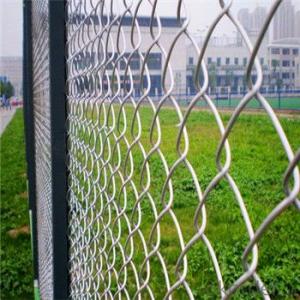5mm Thick Aluminum Plate
5mm Thick Aluminum Plate Related Searches
Led Light Bulbs For Ceiling Fixtures Led Lamps For Ceiling 42 In Ceiling Fan With Light Aluminum Coil Stock For Gutters Aluminum Foil For The Grill Hole Saw For Aluminum Plate Aluminum Tread Plate For Trailer Bow Plate For Aluminum Boat Aluminum Foil For Grow Room Aluminum Foil For Joint PainHot Searches
Stock Price For Aluminum Aluminum Coil Stock For Sale Aluminum Gutter Coil For Sale Used Aluminum Scaffolding For Sale 1/4 Aluminum Plate For Sale Aluminum Bar Stock For Sale Aluminum Round Stock For Sale Aluminum Diamond Plate For Sale Aluminum Scaffolding For Sale Craigslist 6061 Aluminum Plate For Sale Aluminum Dock Plate For Sale 7075 Aluminum Plate For Sale Aluminum Tread Plate For Sale Aluminum Checker Plate For Sale Aluminum Plate For Sale Near Me Plate Aluminum For Sale Aluminum Plate For Sale Aluminum Square Stock For Sale Aluminum Flat Stock For Sale Billet Aluminum Stock For Sale5mm Thick Aluminum Plate Supplier & Manufacturer from China
Okorder.com is a professional 5mm Thick Aluminum Plate supplier & manufacturer, offers integrated one-stop services including real-time quoting and online cargo tracking. We are funded by CNBM Group, a Fortune 500 enterprise and the largest 5mm Thick Aluminum Plate firm in China.Hot Products
FAQ
- I had a physics exams today and it was asking whether or not a shiny surface aluminium blanket was suitable to keep the sleeper warm. I put that because it's a conductor of electricitiy, heat loss will be greater so it wont be suitable for keeping him warm. On the other hand, some other people said that because it had a shiny surface, thus a good reflector of heat, it would be suitable for keeping him warm. Are both arguments correct?
- it will only keep you warm if you're in the sun. if you're in the dark then you're whistling Dixie Allan, you taught me something new, thank you :)
- Patterned aluminum coils have a wide range of potential applications across various industries. One of the main uses of patterned aluminum coils is in the construction industry. These coils can be used for roofing, siding, and cladding applications. The patterned surface helps to enhance the aesthetic appeal of buildings and can also provide additional strength and durability. Another potential application of patterned aluminum coils is in the transportation industry. These coils can be used for manufacturing automotive parts such as body panels, trims, and decorative accents. The patterned surface adds a unique and stylish look to vehicles while also providing corrosion resistance and lightweight properties. Patterned aluminum coils can also be utilized in the manufacturing of household appliances and furniture. They can be used for creating decorative panels, cabinets, and countertops. The patterned surface can add a modern and sophisticated touch to these products, making them more visually appealing to consumers. Additionally, patterned aluminum coils have applications in the packaging industry. They can be used for manufacturing packaging materials such as cans, containers, and lids. The patterned surface can make the packaging more eye-catching, helping to attract customers and increase sales. Furthermore, patterned aluminum coils can be used in the production of signage and advertising materials. The patterned surface offers a unique and attention-grabbing appearance, making it ideal for creating signage that stands out and effectively communicates messages. Overall, the potential applications of patterned aluminum coils are vast and varied. From construction to transportation, household appliances to packaging, and signage to advertising, these coils offer a versatile solution for enhancing aesthetics, durability, and functionality in various industries.
- There are several ways in which aluminum coils help reduce carbon emissions. To begin with, aluminum is a lightweight material, unlike other metals such as steel. This means that less energy is needed to transport and handle aluminum coils. The reduced weight leads to lower fuel consumption during transportation, ultimately resulting in decreased carbon emissions. Moreover, the production of aluminum coils requires significantly less energy compared to other metals. Aluminum is highly recyclable and can be melted down and reused without losing its original properties. This recycling process only requires a fraction of the energy needed to produce aluminum from raw materials, resulting in reduced greenhouse gas emissions. In addition, aluminum coils have excellent thermal conductivity. This allows for improved energy efficiency in various applications. For instance, aluminum coils are commonly used in HVAC systems, where they help transfer heat more effectively. This reduces the energy required for heating or cooling, ultimately leading to lower carbon emissions. In summary, the lightweight nature of aluminum coils, their recyclability, and their improved energy efficiency all contribute to reduced carbon emissions. By utilizing aluminum coils in different industries, we can minimize environmental impact, conserve energy resources, and mitigate climate change.
- Aluminum coils are coated through a process called coil coating, where a thin layer of protective material is applied to enhance their durability. This coating can be done through various methods such as roll coating, spray coating, or coil coating lines. The coating material used is typically a combination of resins, polymers, and additives, which provide resistance against corrosion, UV rays, abrasion, and other environmental factors. This coating process helps to extend the lifespan of aluminum coils and maintain their appearance and performance even in harsh conditions.
- Yes, aluminum coils can be used in the production of chemical storage tanks. Aluminum is a durable and corrosion-resistant material, making it suitable for containing various chemicals. Additionally, its lightweight nature allows for easier handling and installation of the storage tanks.
- Aluminum coils have specific guidelines for storage, and here are some key considerations: 1. When storing aluminum coils, it is necessary to place them in a clean, dry, and well-ventilated area. The storage facility should be free from excessive humidity, direct sunlight, and temperature fluctuations. 2. To prevent damage, handle the coils with care. Appropriate lifting equipment should be used to lift them, avoiding any bending or deformation. 3. Proper support is crucial when stacking the coils to prevent distortion or collapse. It is recommended to stack the coils horizontally on a flat surface, preferably on pallets or racks. Sufficient space should be left between each coil to allow for ventilation. 4. Protect the coils from dust, dirt, and moisture. Cover them with suitable protective materials like plastic sheets or tarpaulins to prevent contamination or oxidation. 5. Labeling each coil with relevant information, such as the alloy type, size, and production date, is advisable. This helps with easy identification and efficient inventory management. Additionally, maintaining an organized storage system prevents damage and enables efficient retrieval. 6. Regular inspection and inventory checks are necessary to identify any signs of damage or deterioration. Rotate the coils to ensure proper usage and avoid prolonged storage that could affect quality. It is important to note that these guidelines may vary depending on the specific requirements of the manufacturer or supplier. Therefore, it is advisable to consult the manufacturer's recommendations or seek professional advice for the storage of aluminum coils.
- Why is the aluminum roll upset?
- Mainly in the aluminum slitting process, for various reasons, does not meet the standards and specifications of products, can be used to roll the machine from the new trimming and slitting, winding up to meet customer needs of product specifications
- Aluminum coils are not typically recommended for use in high-pressure or high-temperature environments. While aluminum is known for its high thermal conductivity and corrosion resistance, it has certain limitations when exposed to extreme conditions. In terms of high-pressure environments, aluminum coils may not possess the necessary strength and durability required to withstand the forces exerted by the pressurized system. Aluminum has a lower tensile strength compared to other metals like steel or titanium, which makes it more prone to deformation or failure under high pressure. Therefore, it is generally advised to use materials with higher strength and pressure ratings in such scenarios. Similarly, aluminum coils have a relatively low melting point compared to metals like steel or copper. The melting point of aluminum is around 660 degrees Celsius (1220 degrees Fahrenheit), which makes it susceptible to damage or failure in high-temperature environments. In applications where the temperature exceeds the melting point of aluminum, it is recommended to use materials with higher temperature resistance. However, it is worth mentioning that there are specialized alloys and coatings available that can enhance the high-temperature and high-pressure capabilities of aluminum. These modifications can improve its strength, heat resistance, and corrosion resistance, making it suitable for certain applications in extreme conditions. Nonetheless, the specific requirements and limitations of the intended environment should be carefully considered before deciding to use aluminum coils. Consulting with experts and considering alternative materials may be necessary to ensure the safety and efficiency of the system.














































